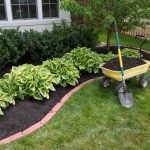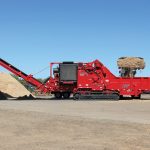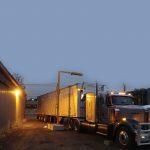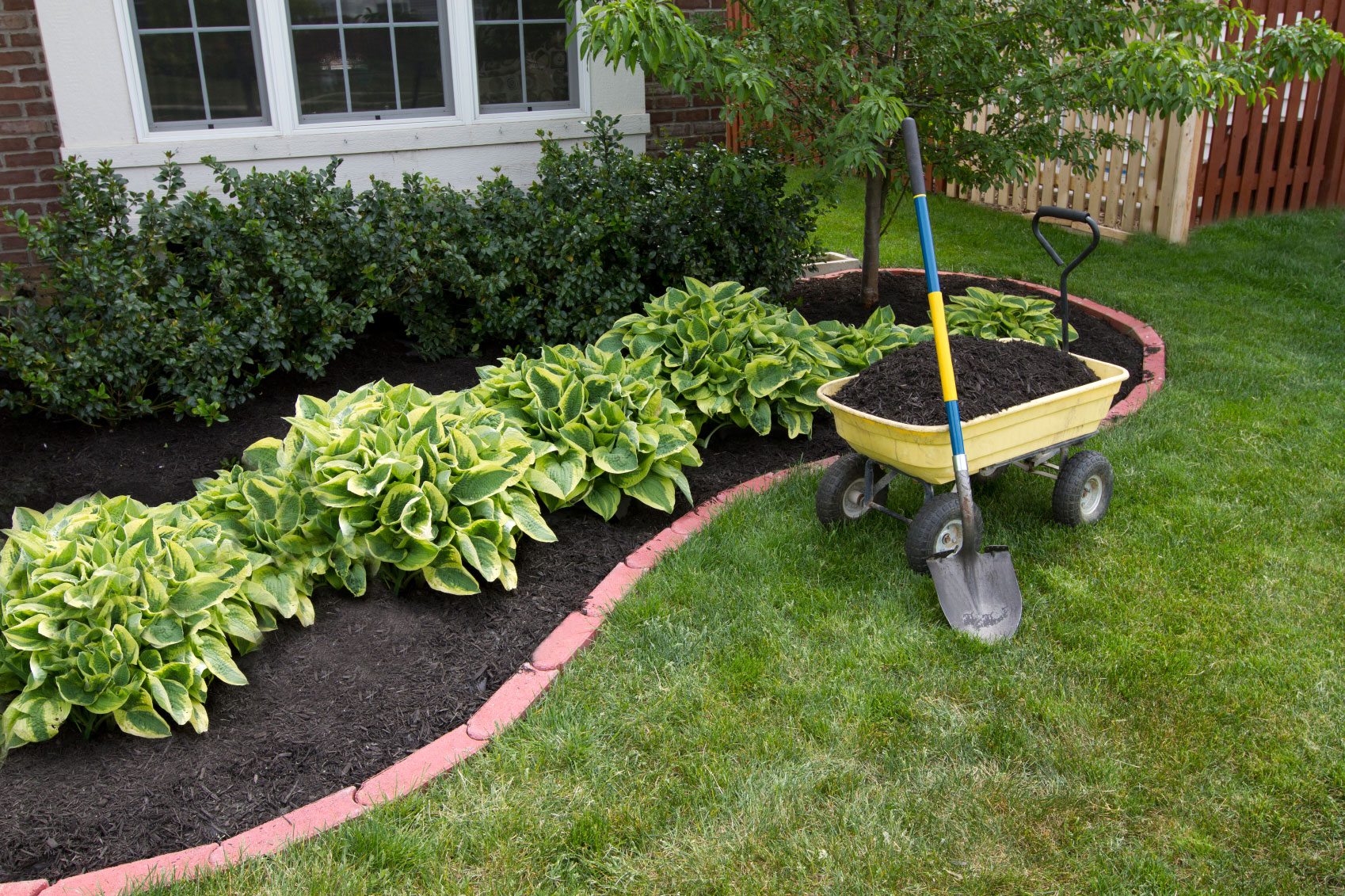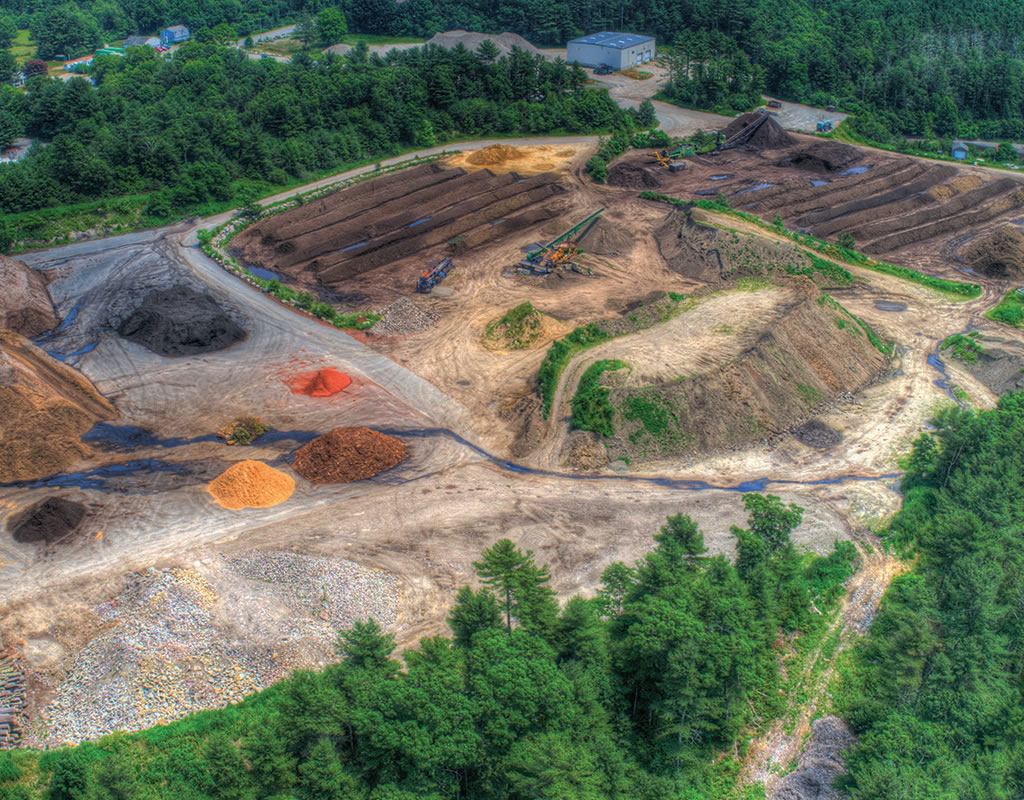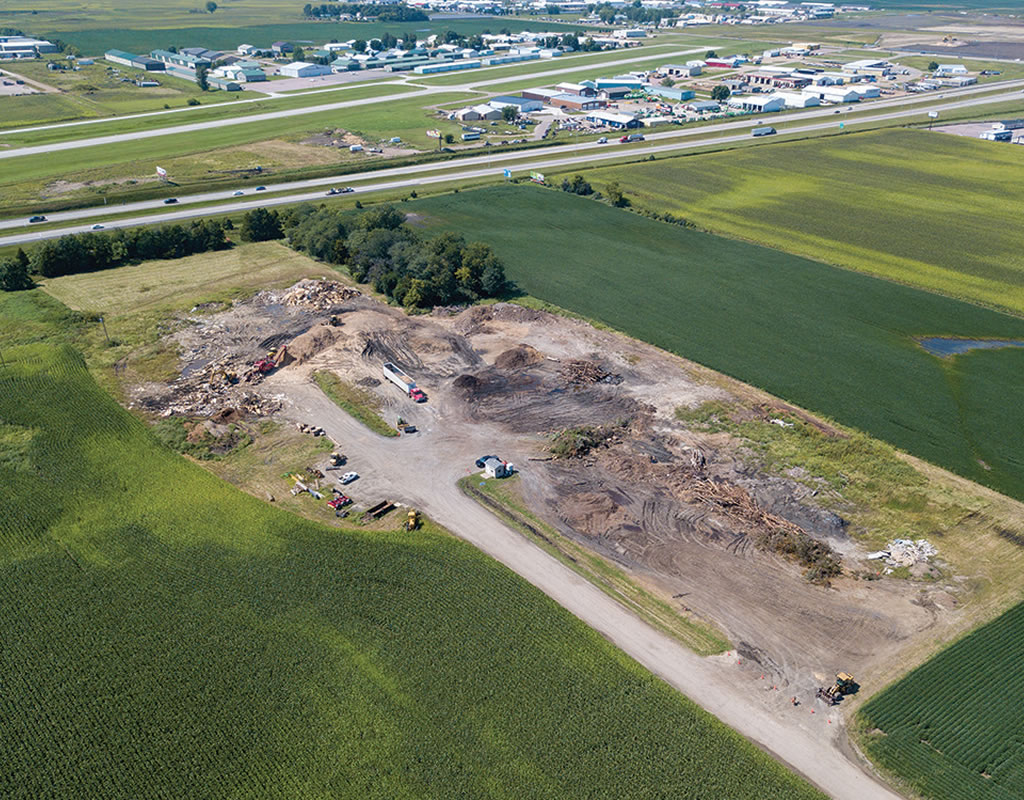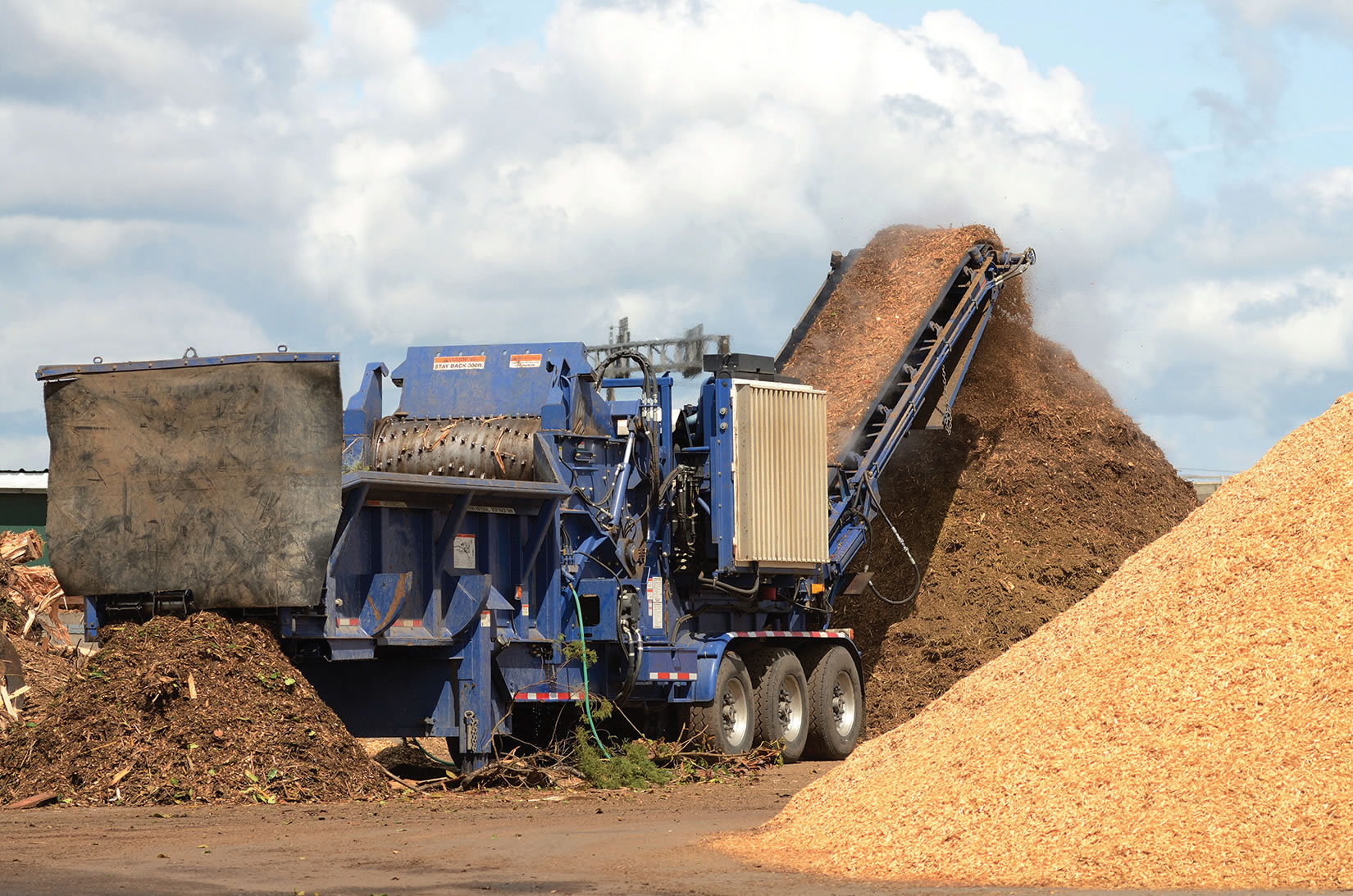By Ken McEntee
Workplace injury reports from the Occupational Safety and Health Administration (OSHA) can serve as gruesome reminders about how dangerous grinders and other mulching facility equipment can be when proper safety precautions aren't utilized.
In March 2018, an employee at a Missouri lumber company was killed while operating a hog grinder used to make mulch out of lumber scrap. According to OSHA, the worker fell into the chute of the grinder and was pulverized by the blades of the grinder.
During the same month, a worker at a Florida landfill died of head trauma while clearing a jam from a trommel system. OSHA said he got caught in the conveyor system and was dumped into a pile located 150 feet from the equipment. The incident investigation revealed that past practices involved the clearing of jams while the machine was in operation. It was speculated that the employee followed that practice during the accident.
In April 2017 an employee at a landscape waste yard in Ohio was killed after getting off of the skid steer track loader he was operating and was pinned between his loader and a front-end loader that was backing up while loading material into a tub grinder.
In June 2017, a worker at an Alabama lumber supply yard was cleaning around a conveyor belt that fed wood waste trimmings to a horizontal wood grinder. As he cleaned the conveyor belt, his right arm was caught between the tail pulley and belt of the long-inclined belt conveyor, causing multiple fractures to his right arm.
As a report from Beltsville, Md. shows, safety needs to be practiced away from mulching operations as well. In April 2016, an employee was killed while adjusting the mulch flow on a mulch blower truck. After realizing the controls were not adjusting the mulch flow to where it needed to be, OSHA said, he climbed a ladder located on the back of the mulch truck, then jumped into the back of the truck and started to move the mulch into the auger with a pitchfork. He was caught by and pulled into the stir stick of a rotating auger and died of traumatic injuries that resulted when he was wrapped around the stir stick.
In the opinion of Trey Tyre, vice president of operations and safety director for Waupaca Northwoods, Waupaka, Wisc., it unfortunately, sometimes takes an accident for the importance of safety to become a vital issue.
"I would say the majority of managers and companies in our industry do not place enough time and resources towards building a positive safety culture," he said. "I had to learn some of these lessons the hard way. My goal going forward is to provide our managers and employees with the necessary training and tools so that they can do things the correct way from the start."
Tyre and other mulch producers contacted for this article said worker safety is the top priority at their operations.
"There are a lot of safety slogans out there, like "safety is number one," or "safety first," but it is absolutely our company's top priority," Tyre said. "Saying it doesn’t make it so. However, we believe in daily action to back up our beliefs. Without a doubt, our employees are our most important assets and most critical to a successful operation. Equipment and inventory, while it usually has negative financial impacts, can be repaired or replaced. Our company operates off of some simple mutual expectations. These core beliefs include items such as teamwork and accountability, two-way communication, quality output and proactive performance. At the very top of that list is safety and housekeeping."
Kendall Cason, general manager, Landscapers Pride, New Waverly, Tex., said a safe workplace not only reduces costs, but also provides a better work environment for employees.
"We’re a family-oriented company," Cason said. "We want our employees to be safe, happy and taken care of."
Landscapers Pride has instituted a monthly reward system that incentivizes workers to adhere to its safety program, Cason said.
"For each month without a safety incident, workers are rewarded with a catered lunch and an employee of the month receives a bonus and preferred parking," he said.
Tyre said Waupaca Northwoods addresses worker safety by implementing written policy, guidelines and a safety protocol
"OSHA sets overall regulatory guidelines, but we view OSHA requirements as the bare minimum," he said. "Our policies and procedures are written with a higher and more detailed expectation than OSHA standards."
Tyre said his company's internal safety programs and training are broken down by subject. Each subject has its own “program.”
"For example, we have a standalone program for hearing protection, blood-borne pathogens, powered mobile equipment, lock-out-tag-out (LOTO), etc. Overall we have 20 designated safety specific programs. Inclusive to each program, each facility will have a site specific program that gets into more of the details and unique situations for different locations."
Waupaca requires new-hire training and annual refresher training on each program for all employees. All visitors are required to be briefed and to sign off on required safety procedures while on site
"Additionally, we hold weekly 'toolbox talks' at each site," Tyre said. "This is a 15 to 30 minute safety meeting about a designated topic and an open forum at the end so that any safety concerns can be addressed."
Landscapers Pride, Cason said, has a written safety policy that is reviewed with each new hire and periodically reviewed with employees at monthly safety meetings.
"Each new hire also goes through orientation with our safety meeting to learn what is expected of them and gets them familiar with their issued safety gear," Cason said.
Steve Liffers, owner and co-president of Swanson Bark, Longview, Wash., said his company has a comprehensive safety manual that covers every facet of its business.
Working with large machinery, Cason said, creates "huge areas of vulnerability."
"We ask for constant vigilance while working near these machines, but bad days happen," he said. "We issue breakaway vests that will pull apart if a machine grabs someone. We issue hard hats and safety goggles in case of debris. Signs are placed around the yard warning of dangers and areas that need extra caution."
Liffers said Swanson Bark has a dedicated safety manager "with the ability to fire immediately," and a monthly assessment meeting to discuss the past month's infractions and resolutions.
The most vulnerable areas in the yard, Tyre said, probably are "the areas where we haven’t thought of what could go wrong or conducted a thorough risk analysis on yet. Any area can be potentially dangerous and lead to an accident. To combat this, we conduct risk assessments of different locations and all the tasks we can think of."
He said input from experienced employees is critical because they usually know the equipment or procedure better than anyone else.
"It's also important to get an outside set of eyes on task as well," Tyre said. "As is human nature, many times we can become oblivious and complacent to our surroundings and start to block out or ignore potential safety issues."
Each piece of machinery at a mulching facility has different safety challenges, and therefore specific safety rules, operators said.
"We give additional and ongoing training for our grinder and loader operators," Cason said. "They also have additional rules posted on the equipment that must be followed at all times for their safety and those around them. We also provide radios to each operator for communication. On our bagging lines, operators are given breakaway vests that are designed to break off if they get caught in the machine instead of pulling someone in. At our coloring station, employees wear rain gear as protection."
Tyre said each specific piece of equipment has its own start up and shut down procedures.
"Many are addressed by our core safety programs," he said. "For example, our LOTO program contains more in-depth machine specific procedures on how to appropriately isolate energy for each equipment or operation on site. Our powered mobile equipment program contains more in depth and specific training for forklifts, loaders and skid steers respectively."
Operators interviewed said they believe equipment manufacturers are generally doing a good job of making their machines safe.
"Many of the manufacturers of the machines we use have built in many safety features that help to reduce the possibility of injuries," Caton said.
Tyre said machines are safer than they were 10 to 15 years ago.
"The biggest issue we run across is added safety features that have not been proven out in an operations setting," he said.
He said some vendors could do a better job of safety training on their equipment.
"Some are better than others," he said.
While Liffers said most equipment vendors are "very good" at safety training, Cason said more in-depth training, above and beyond short demonstrations "would be nice."
"We recently purchased a new shaker and the reps came out and gave us an in-depth safety, maintenance and use demonstration," Cason said. "It was a fantastic way to learn about our new equipment."
Liffers said the key to avoiding accidents is "training, training, training."
Tyre, however, said the success of a safety program depends in large part on employee participation.
"The challenge is to get them to buy in," he said. "As management, it absolutely critical that we show employees we care about them through our actions and by timely addressing potential safety concerns.
Ken McEntee is a Strongsville, Ohio-based writer and the publisher of Composting News (www.compostingnews.com).
Related News
Subscribe Today
Every other month, Soil & Mulch Producer
News brings you important stories about:
• New Technology
• Products
• Industry News
• Research Studies
Soil & Mulch Producer News features articles and services relevant to your daily operations.


